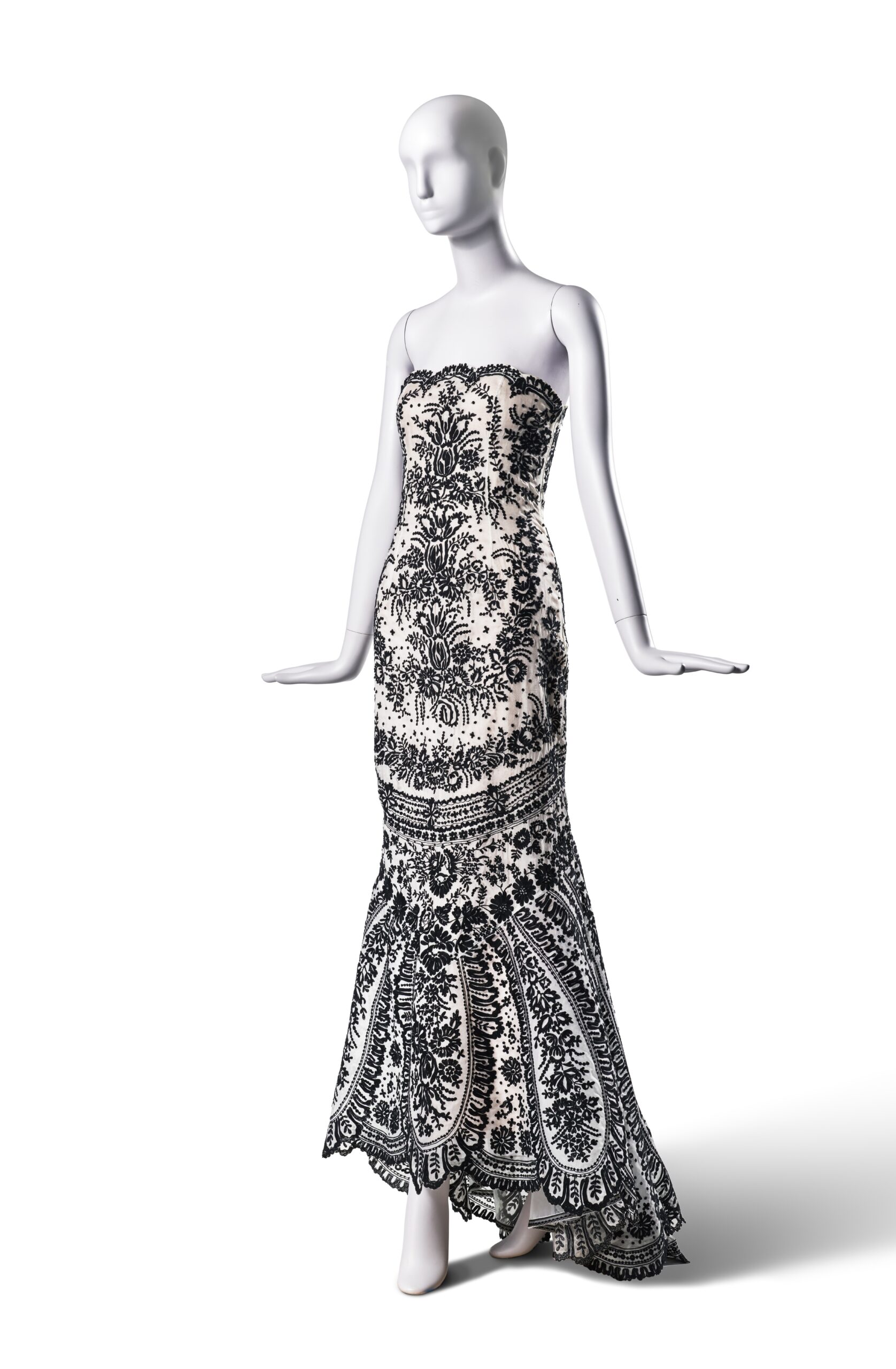Just a few years ago, San Francisco’s business district was a bee hive of activity with roving clusters of smart-suited young women professionals scurrying from office buildings to luncheon dates and back again in elegant costume to a nightclub or cocktail lounge for an after work tipple.
Then came the COVID epidemic and the work-from-home trend. This spelled not only the end of socializing, say local culture critics, but also the severe decline of fashion.
But by all appearances, there’s a revival underway. Women are dressing up again…even if the men may be slower than usual in keeping up. It’s especially gratifying, then, to see that the City’s de Young Museum is currently staging Fashioning San Francisco: A Century of Style.
The timing could not be better. Spanning a century of high fashion and haute couture worn by Bay Area women, this exhibition includes traces the evolution of bohemian styles to cutting edge evening wear inspired by the city’s location on the Pacific Rim and its inclusive mindset.
It’s important to remember that San Francisco has recovered from a disaster even more devastating than the recent epidemic…the 1906 earthquake and fire, for example.
Fashioning San Francisco commences in the early 20th century, a time when our city was regaining its position and redefining itself in the wake this catastrophe as a desire to assert its international status in the dress codes of its prominent women.
Such manifestations include imported French fashions brought into the city through its port, as well as presentations of French couture gowns at the Panama-Pacific International Exposition in 1915. In the 19th and early 20th centuries, French peoples formed one of the largest immigrant communities in San Francisco, and upon their arrival, they began importing French goods. The exhibition will feature a number of early French designs including rare Callot Sœurs and Lucile gowns, which attest to San Francisco’s burgeoning affluence and cosmopolitanism.
But the Eternal City is also well represented in this show, an impressive salute to Rome’s La Dolce Vita era and its “little black dress,” are the epitome of 1950s femininity and early 1960s chic.
Film critics say that Cristobal Balenciaga’s 1957 sack dress may have even inspired the premise for Federico Fellini’s 1960 morality tale. The sack dress, could well have rendered a woman gorgeous who could be a skeleton of squalor and solitude inside, not unlike the flip-side of the “sweet life” the film portrays.
Indeed, the exhibition dedicates a section this most indispensable wardrobe piece, featuring designs from Italy’s Oscar de la Renta, and Valentino.

